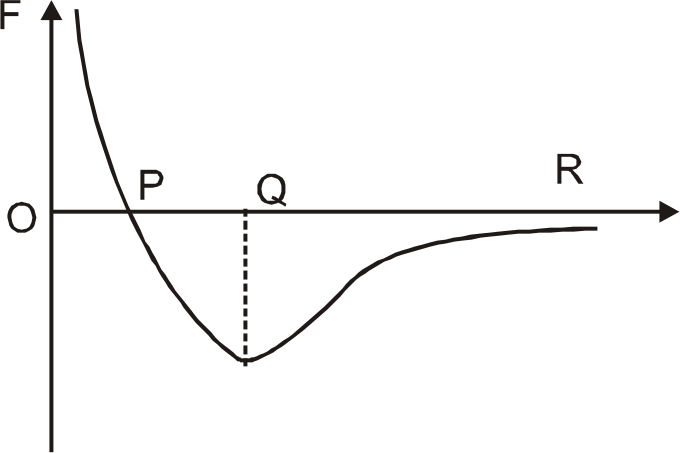Figure shows roughly how the force F between two adjacent atoms in a solid varies with inter atomic separation r. Which of the following statements are correct ?

OQ is the equilibrium separation.
Hooke's law is obeyed near P.
The potential energy of the atoms is the gradient of the graph at all points.
The energy to separate the atoms completely is obtained from the magnitude of the area enclosed below the axis of r.
Since F-r curve is continuous, so
dFdr∣∣∣_(P+)=dFdr∣∣∣P−=dFdr∣P=−α and F (at P) =0 so Hooke's law valid near point P.
Energy required to separate the atoms =|ΔU|=∣∣∣−∫→F.→dr∣∣∣=|Area enclosed between curve and r-axis|
Topper's Solved these Questions
Similar Questions
Knowledge Check
For the electrons of oxygen atom, which of the following statements correct?
AZeff for an electron in a 2s orbital is the same as Zeff for an electron in a 2p orbital.BAn electron in the 2s orbital has the same energy as an electron in the 2p orbital.CZeff for an electron in 1s orbital is the same as Zeff for an electron in a 2s orbital.DThe two electrons present in the 2s orbital have spin quantum numbers, ms but of opposite sign.For the energy levels in an atom which one of the following statements is correct?
AThere are seven principal electron energy levelsBThe second principal energy level can have four sub energy levels and contains a maximum of eight electronsCThe Menergy level can have a maximum of 32 electronsDThe 4s subenergy level is at a higher energy than the 3d subenergy level.
An atom of an element has electronic configuration 2,8,1. Which of the following statement is correct ?
View SolutionFor the energy levels in atom, which one of the following statement (s) is (are) correct?
View SolutionConsider the following atomic orbitals :

Which of the following statement(s) is /are correct regarding given orbital ?
View SolutionA neutron collies head-on with a stationary hydrogen atom in ground state. Which of the following statements is/are correct ?
View SolutionWhich of the following statements (regarding an atom of H ) are correct?
View SolutionPotential energy U(r ) varies with position r as shown in figure

Which of the following conclusions are correct?
View Solution
